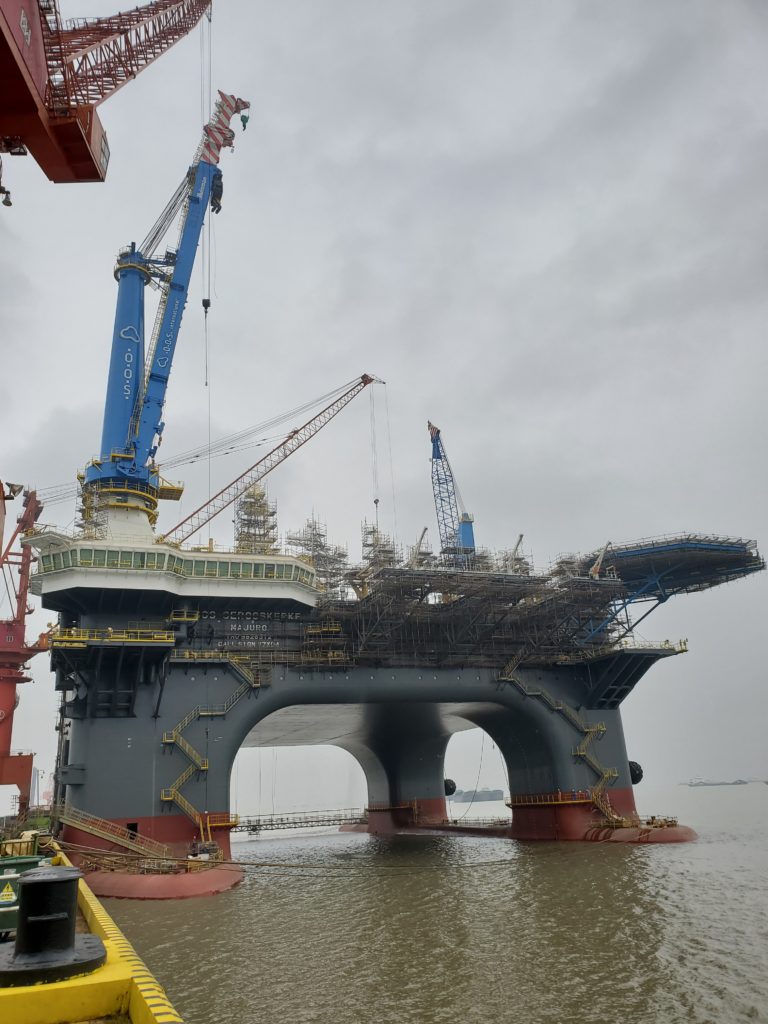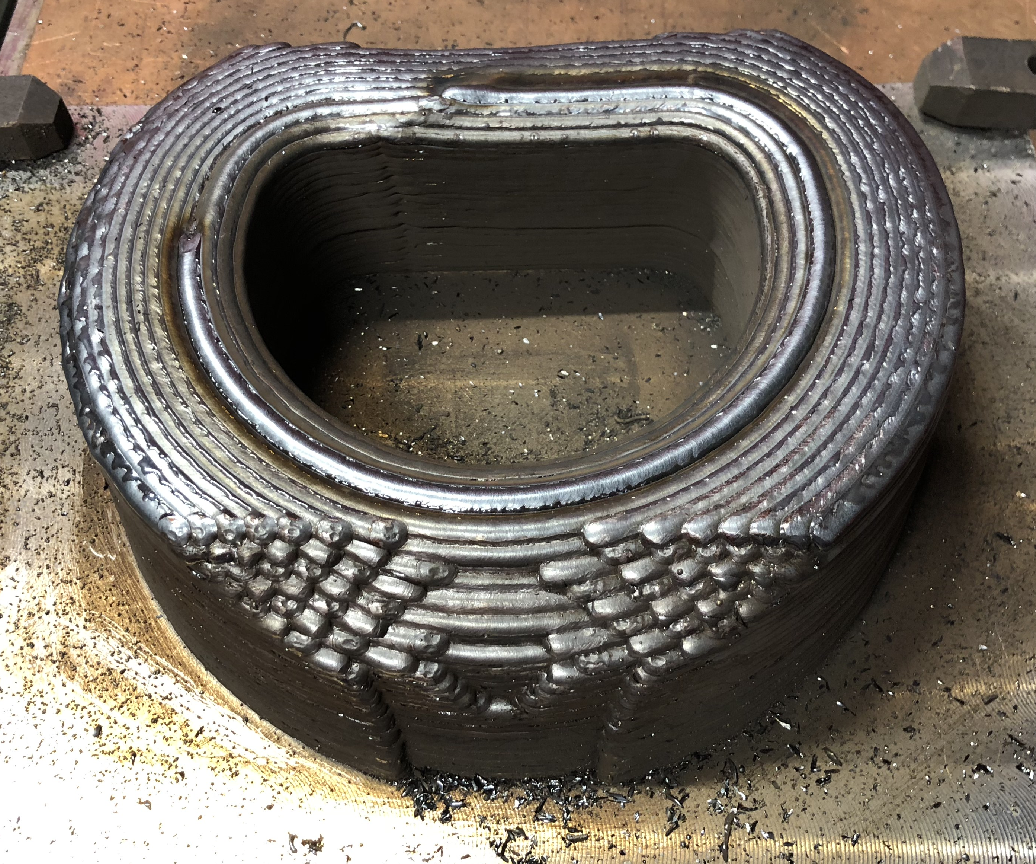Global heavy equipment manufacturer Huisman, headquartered in the Netherlands, has announced the installation of its first ever 3D printed crane hook.
The 36,000 kg hook, designed specifically for use in offshore lifting operations, has been certified by the American Bureau of Shipping (ABS). Following certification it was recently installed aboard the the OOS Serooskerke, a semi submersible crane, and is due to be fitted on sister vessel the OOS Walcheren in the near future.
Tipped to be the first 3D printed crane hooks in history, the installations mark an important step forward in the production, and acceptance, of end use 3D printed heavy lifting components in the maritime and offshore industry.

The versatility of WAAM technology
Normally, high grade tensile steel crane hooks are manufactured by casting or forging. In this instance the OOS Serooskerke’s hook was made using Wire Arc Additive Manufacturing (WAAM) technology at Huisman’s facility in the Czech Republic.
WAAM is a method of metal 3D printing closely related to the traditional welding process. As the name suggests, it takes a wire metal feedstock and melts it using an electric arc plasma beam. For its ability to produce large parts, the method has already found a number of maritime and industrial applications. In 2017 RAMLAB, manufacturer maritime metal parts based in the port of Rotterdam, produced a WAAM-made ship propeller termed the WAAMpeller. Elsewhere, Dutch manufacturer of robotic additive 3D printers MX3D, is harnessing the technology to produce a 12 meter long steel bridge for the city of Amsterdam.
Most recently, WAAM developer Cranfield University unveiled two of the most high profile WAAM parts they have ever developed. One for the British defence company BAE Systems and the other for Franco-Italian aerospace manufacturer Thales Alenia Space. It marked a crucial step forward for WAAM technology’s commercialization.

Making waves in 3D printing for offshore application
In January 2018 Huisman announced the first successful load test of a smaller 10 ton prototype version of its WAAM 3D printed hook, managing to take a load of 80 tons. Though under a third of the weight of the new OOS Serooskerke hook it validated WAAM’s ability to produce large metal lifting equipment.
Advantages of employing WAAM for hook manufacture over more traditional manufacturing processes includes the ability to control the quality of the material used as the welding wire. This enables the manufacture of parts with a higher component density and strong mechanical properties superior to those manufactured with traditional casting manufacturing methods.
Huisman engineer Hugo Romer, hook project lead at Huisman’s test center in China, explains, “The wire arc manufacturing process allows us to have unprecedented control over the material quality. Using careful process preparation we’re able to produce high strength steel components with a quality comparable to forging, to give you superior quality compared to traditional castings.”
On the OOS Serooskerke the new hook will be used in offshore construction, decommissioning and subsea installation projects, such as oil platform construction and pipe laying.
“By designing, producing, extensive testing, certifying and delivering these 3D printed hooks for actual offshore use,” Romer adds, “we believe a new step was made in industry acceptance of high strength steel 3D printed heavy lifting components.”
Vote for your 3D Printing Innovation of the Year in the 2019 3D Printing Industry Awards.
Subscribe to the 3D Printing Industry newsletter for the latest news in additive manufacturing. You can also keep connected by following us on Twitter and liking us on Facebook. Looking for a career in additive manufacturing? Visit 3D Printing Jobs for a selection of roles in the industry.
Featured image shows the 36 ton 3D printed hook as installed on the OOS Serooskerke. Image via Huisman



